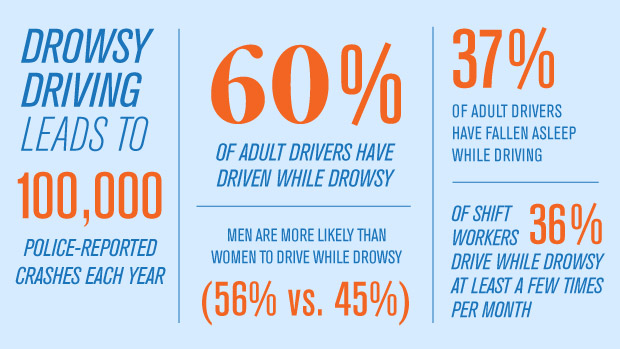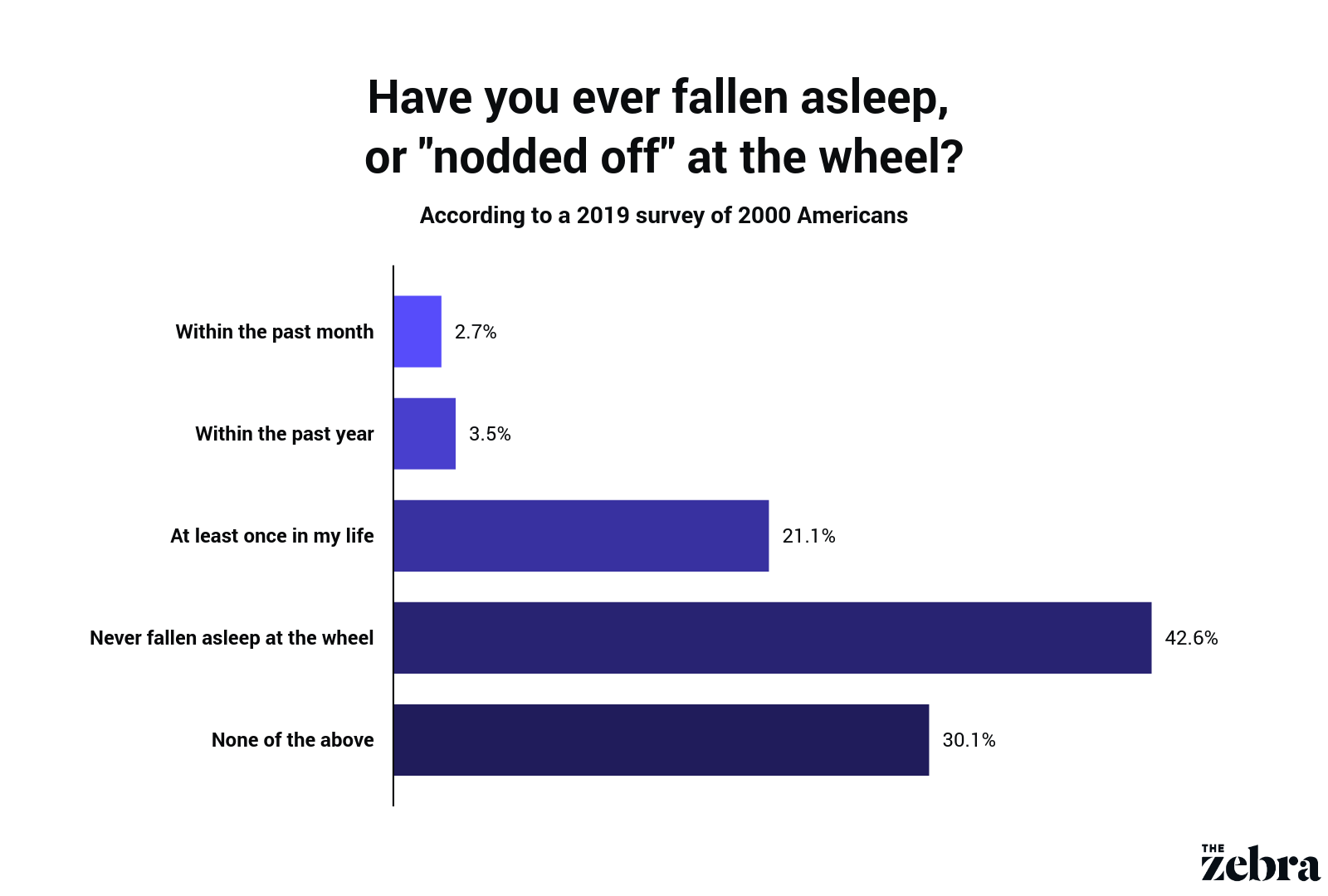Imagine cruising down the highway with the wind in your hair and the open road ahead. Everything seems perfect until you feel your eyelids start to droop.
Drowsy driving is a silent danger that can turn a peaceful drive into a nightmare in seconds. You might think it only happens to others, but the statistics tell a different story. Did you know that drowsy driving causes thousands of accidents each year?
These aren’t just numbers—they could be a wake-up call for you and your loved ones. As you read on, you’ll discover eye-opening statistics that could change the way you think about driving when you’re tired. Stay with us to learn how you can protect yourself and others from this hidden threat.
Impact On Road Safety
Drowsy driving is a silent threat to road safety that often goes unnoticed until it’s too late. You might think a little fatigue won’t hurt, but statistics paint a different picture. The impact on road safety is not just about those who fall asleep at the wheel; it’s about everyone sharing the road.
Rise In Accident Rates
Drowsy driving has been a growing concern, with accident rates climbing in recent years. A tired driver can easily miss a stop sign or fail to react to sudden changes in traffic. Each moment you spend driving while drowsy increases the risk of a crash significantly.
Consider this: studies show that driving after being awake for 18 hours impairs your reaction times as much as having a blood alcohol concentration of 0.05%. This statistic should make you question your own habits. Are you driving safely when you’re tired, or are you gambling with your safety and the safety of others?
Fatalities And Injuries
The consequences of drowsy driving are severe, with thousands of fatalities reported each year. These tragic outcomes are not just numbers; they are lives lost and families shattered. You may think you can handle being tired behind the wheel, but the statistics tell us otherwise.
In addition to fatalities, countless injuries occur annually due to drowsy driving. These injuries can range from minor to life-altering, affecting not only the driver but also passengers and other road users. The question is, is it worth the risk to drive when you know you’re too tired?
Next time you’re behind the wheel and feeling drowsy, remember the impact it can have on road safety. It’s not just about reaching your destination; it’s about ensuring you and everyone else get there safely. Make the choice to rest and drive alert.

Credit: blog.intlauto.com
Common Causes
Drowsy driving is a serious issue on the roads today. Many drivers underestimate the risks of driving while tired. Understanding the common causes can help in preventing accidents. Here, we explore the primary factors leading to drowsy driving.
Sleep Deprivation
Sleep deprivation is a leading cause of drowsy driving. Lack of sleep affects focus and reaction time. Drivers need at least seven hours of sleep. Many people get much less. Late nights and early mornings disrupt sleep patterns. This leads to tiredness behind the wheel.
Long Work Hours
Long work hours contribute to fatigue. People work extended shifts without proper breaks. This decreases alertness on the road. Commuting after a long day worsens tiredness. Night shifts are especially challenging. They disrupt the natural sleep cycle.
Medication Effects
Certain medications cause drowsiness. Allergy and cold medicines are common culprits. They make drivers sleepy and less focused. Always check medication labels for warnings. Consult with a doctor if unsure about side effects. Avoid driving if medications make you feel tired.
High-risk Groups
Drowsy driving is a serious issue that affects many individuals on the road. Certain groups are more prone to sleep-related accidents. Understanding these high-risk groups can help you make informed decisions and stay safe behind the wheel. Let’s explore these categories and see if you fall into one.
Young Drivers
Young drivers, especially teenagers, often face drowsy driving challenges. Late nights and irregular sleep patterns contribute to their fatigue. You might recall your own teenage years when staying up all night seemed normal. But this sleep deprivation can lead to dangerous driving conditions.
Statistics show that drivers under 25 are at higher risk due to lifestyle choices. Balancing school, work, and social activities can be overwhelming. Consider setting a regular sleep schedule to ensure you’re alert when driving. How many times have you felt exhausted behind the wheel? It’s time to prioritize sleep.
Shift Workers
Shift workers face unique challenges. Their irregular hours disrupt the body’s natural sleep cycle. If you’re working late-night or rotating shifts, your sleep might suffer. This lack of rest can lead to drowsy driving accidents.
Studies indicate that shift workers are more likely to nod off during commutes. Have you ever struggled to stay awake after a long shift? Finding effective ways to manage your sleep schedule is crucial. Simple adjustments like power naps or consistent sleep times can make a difference.
Commercial Vehicle Operators
Commercial vehicle operators often spend long hours on the road. The pressure to meet tight delivery schedules can lead to fatigue. If you’re driving a truck or bus, staying alert is vital for your safety and others on the road.
Data reveals that commercial drivers are at a higher risk due to prolonged driving periods. Have you ever found yourself fighting to keep your eyes open during long hauls? Regular breaks and proper rest are essential to combat fatigue. Prioritize your health and ensure you’re well-rested before embarking on long journeys.
Understanding these high-risk groups can help you take proactive measures. Are you part of one of these categories? Recognizing the signs of fatigue and taking action can prevent accidents. Remember, your safety is a priority.
Detection Challenges
Drowsy driving poses significant detection challenges. Statistics show it causes thousands of accidents yearly, endangering lives. Identifying sleepy drivers remains difficult due to subtle signs and varying individual responses.
Detecting drowsy driving is a complex challenge with many layers. Unlike alcohol or drugs, there’s no simple test to determine if a driver is too sleepy to be behind the wheel. This lack of clear detection methods means that many cases of drowsy driving go unnoticed, increasing risks on the road.
Lack Of Reliable Tests
Currently, there are no reliable roadside tests for drowsiness. Unlike a breathalyzer for alcohol, drowsy driving lacks a straightforward, objective measure. This absence of a quick, definitive test makes it challenging for law enforcement to identify drowsy drivers. Consider your last long drive—did you feel your eyelids getting heavy? Many drivers might not even realize they’re too tired until it’s too late. This uncertainty raises a question: How can we ensure that drivers are fully alert without reliable testing?
Underreporting Issues
Drowsy driving incidents are often underreported. Many drivers may not admit to being sleepy after an accident, fearing blame or legal consequences. This leads to a significant gap in data, making it harder to understand the true scope of the problem. If you’ve ever nodded off at the wheel, you’re not alone. But how many of these instances are actually reported? It’s crucial to address this underreporting so that awareness and preventive measures can be strengthened. Encouraging honest communication can start changing the statistics, one driver at a time. Together, we can push for better data collection and improved safety on our roads.
Preventive Measures
Drowsy driving poses a significant threat to road safety. Understanding preventive measures can help mitigate this risk. Raising awareness and implementing innovative technologies are crucial steps. Let’s explore how public awareness, technology, and regulation contribute to reducing drowsy driving incidents.
Public Awareness Campaigns
Public awareness campaigns are vital in educating drivers about drowsy driving risks. These campaigns use media channels to reach a wide audience. They highlight the dangers of driving while tired. Educational materials in schools can target young drivers. Community workshops can engage local audiences effectively. Consistent messaging helps reinforce safe driving habits. Awareness leads to informed choices on the road.
Technological Innovations
Technology plays a crucial role in preventing drowsy driving. Modern vehicles often include alert systems for driver fatigue. These systems monitor driver behavior and provide timely warnings. Smartphone apps also help by reminding drivers to take breaks. Wearable devices can track sleep patterns and suggest rest times. Car manufacturers continue to develop advanced safety features. These innovations enhance driver awareness and safety.
Policy And Regulation
Governments implement policies to reduce drowsy driving incidents. Regulations may mandate rest periods for commercial drivers. These rules ensure drivers get adequate rest before long trips. Some regions enforce strict penalties for drowsy driving violations. Policymakers work with researchers to update safety standards. Collaboration among stakeholders leads to effective regulatory measures. Strong policies create safer roads for everyone.

Credit: www.thezebra.com
Case Studies
Drowsy driving poses a serious threat on the roads. Understanding real incidents helps highlight its impact. Case studies showcase how fatigue affects driving. They reveal the consequences of falling asleep behind the wheel. Each story offers valuable insights into preventing similar occurrences.
Notable Incidents
In 2014, a tragic accident involved a bus driver in New York. The driver fell asleep, crashing the bus, causing multiple deaths. Another incident occurred in 2018, involving a truck driver in Texas. He dozed off, leading to a multi-vehicle pile-up. These incidents emphasize the dangers of drowsy driving.
A famous case in 2011 involved an airline pilot. After a long shift, he drove home exhausted. He crashed his car, injuring several people. These situations demonstrate the serious impact of driver fatigue.
Lessons Learned
Awareness about sleep’s importance grew from these incidents. Sleep is crucial for safe driving. Employers now encourage rest breaks during long shifts. This reduces fatigue-related accidents.
Technology plays a role in prevention. Many vehicles now feature alert systems. These systems detect driver drowsiness and warn them. Education campaigns stress the need for adequate sleep. They urge drivers to recognize signs of fatigue.
Drivers are encouraged to plan journeys. Taking regular breaks on long trips is vital. These lessons aim to reduce drowsy driving incidents. They foster a safer driving environment for everyone.

Credit: davidaylor.com
Frequently Asked Questions
What Are Common Causes Of Drowsy Driving?
Drowsy driving often results from sleep deprivation, medication side effects, or untreated sleep disorders. Long work hours and irregular sleep patterns can also contribute. Understanding these causes can help in preventing accidents. Prioritizing adequate rest and being aware of these risk factors is crucial for road safety.
How Many Accidents Are Due To Drowsy Driving?
Drowsy driving is responsible for approximately 100,000 crashes annually in the U. S. These accidents result in around 71,000 injuries and 1,550 fatalities each year. The actual numbers might be higher due to underreporting. Recognizing the impact of drowsy driving highlights the need for awareness and prevention strategies.
Who Is Most At Risk For Drowsy Driving?
Young drivers, shift workers, and people with sleep disorders are at higher risk for drowsy driving. Commercial drivers and those working long hours are also vulnerable. Identifying these at-risk groups is essential for targeted interventions and education to reduce drowsy driving incidents.
What Are Signs Of Drowsy Driving?
Common signs include frequent yawning, drifting from lanes, and difficulty focusing. Missing exits or road signs also indicate drowsiness. Recognizing these warning signs early can prevent potential accidents. Drivers should stop and rest if they experience any of these symptoms while on the road.
Conclusion
Drowsy driving remains a serious concern on our roads today. It causes countless accidents each year. These statistics highlight the importance of staying alert while driving. Fatigue affects reaction times and decision-making. Rested drivers are safer drivers. Prioritize sleep to ensure safety behind the wheel.
Consider breaks during long trips. Short naps can make a difference. Be aware of warning signs like yawning or heavy eyelids. Protect yourself and others by being attentive. Every driver plays a role in reducing drowsy driving risks. Remember, a well-rested driver is a responsible driver.
Stay safe, stay awake.
